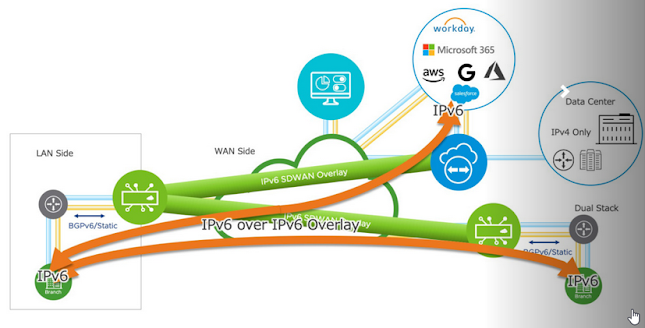NAT, PAT, What ?!: Part 2: IPv6 and NAT

Some weeks ago in Linked-In there were a discussion about NAT and IPv6 and one of the engineer meant that as the IPv6 standard does not define NAT and PAT, using NAT and/or PAT on IPv6 is not a good way of implementation. Now VMware SD-WAN also has full IPv6 support in Underlay and Overlay it uses NAT and specifically SNAT also with IPv6 The implemented IPv6 NAT features are: Default NAT66 on VCG DIA NAT66 at edge (Many-to-one) 1:1 NAT66 and Port Forwarding Policy NAT66 on Edge and VCG SNAT66 when forwarding to Internet-Underlay And in my opinion this is a valid and sound decision. But let's look at possible alternative solutions to NAT in IPv6. The standard defines a kind of Souce Routing with the use of the IPv6 Routing Header to force traffic via specific intermediate hops. Unfortunately that method outside a Provider Segment routing environment, where a slightly different Header is used, is a very bad idea from the security point of view. The mechanism is an equivalen

